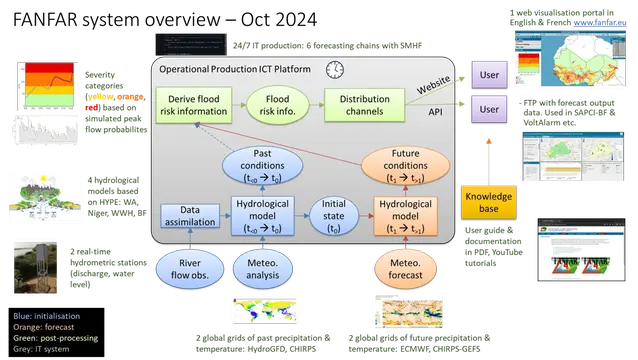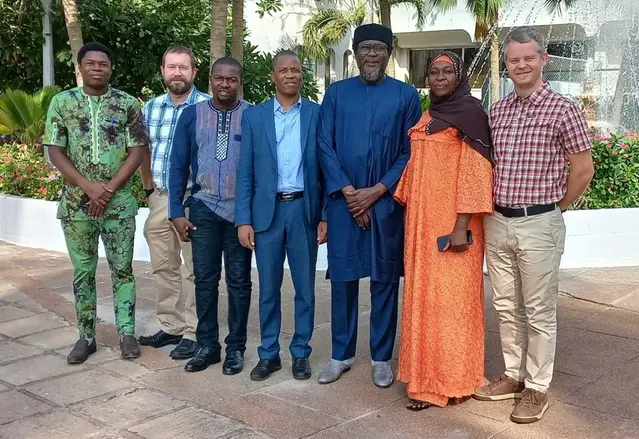Co-development of a multi-model platform for operational forecasting of hydro-climatic extremes in West Africa
In this project SMHI and AGRHYMET join forces to co-develop a multi-model platform for operational forecasting of hydro-climatic extremes in West Africa. It builds on our decade-long collaboration and achievements in science, technology, capacity development, and societal impact through the FANFAR system.
AGRHYMET is the regional climate centre for West Africa and Sahel, a technical expert institute for hydrology and meteorology on regional level. SMHI and AGRHYMET have collaborated for more than a decade around topics on hydrology and climate change in West Africa.
The two institutions have collaborated in a series of projects focused on hydrological modelling, climate change impacts on hydrological dynamics, analyses of extremes for infrastructure dimensioning, seasonal forecasts for food security, operational flood forecasting and using them to alert society and reduce the impacts of floods.
During 2018-2021 SMHI and AGRHYMET jointly implemented the FANFAR research and innovation project, which co-developed an operational river flood forecasting and alert system for West Africa.
Read more about FANFAR on the project website. External link.
External link.

Thematic overview of the FANFAR hydrological forecasting system as of October 2024.
Aim and objectives
Building on the long-term collaboration and these joint achievements, AGRHYMET and SMHI has an agreement to co-develop a multi-model platform for operational forecasting of hydro-climatic extremes in West Africa and to exploit products and services available at regional and international scales. The project runs from September 2024 to June 2026 and the objectives are to:
- Design and develop an operational multi-model IT platform using cloud computing technology dedicated to forecasting the risks of hydro-climatic extremes.
- Transfer the FANFAR forecast production chains to the platform.
- Strengthen the capacities of thematic and IT specialists at AGRHYMET.
Approach
The project is implemented through three interlinked activities consisting of platform design, platform implementation and capacity development.
The design activity involves dialogues, requirements mapping, and identification and selection of options (e.g. concerning platform architecture and cloud provider).
The implementation activity focuses on technical development of the IT platform foundations (e.g. setting up servers and services at the cloud provider), and on transferring the FANFAR forecast production chains from SMHI infrastructure to the new platform (including meteorological forcing data, hydrological models, post-processing scripts, and scheduled initialisation and forecasting every day).
The third activity focusses on reinforcing the capacity of thematic experts and computer scientists at AGRHYMET to operate and maintain the platform and utilize its products. It includes providing documentation, source code and a user guide as well as practical hands-on training sessions.
Impact
The project takes a key step to enable AGRHYMET to sustainably provide hydro-climatic forecasts in West Africa. Wisely used, this will enable societies to adapt to climate change and reduce the societal impacts floods and droughts such as food insecurity, infrastructure damage and loss of lives.

AGRHYMET and SMHI kick off the project in Lomé, Togo in October 2024.
Countries / focus area: West Africa and Sahel
Subject area: hydrology, meteorology
Duration: Sep 2024 – June 2026
Partners: SMHI, AGRHYMET CCR – AOS
Funder: Food System Resilience Programme (FSRP), World Bank (Grant IDA 920) and Dutch Fund TF0B8255
